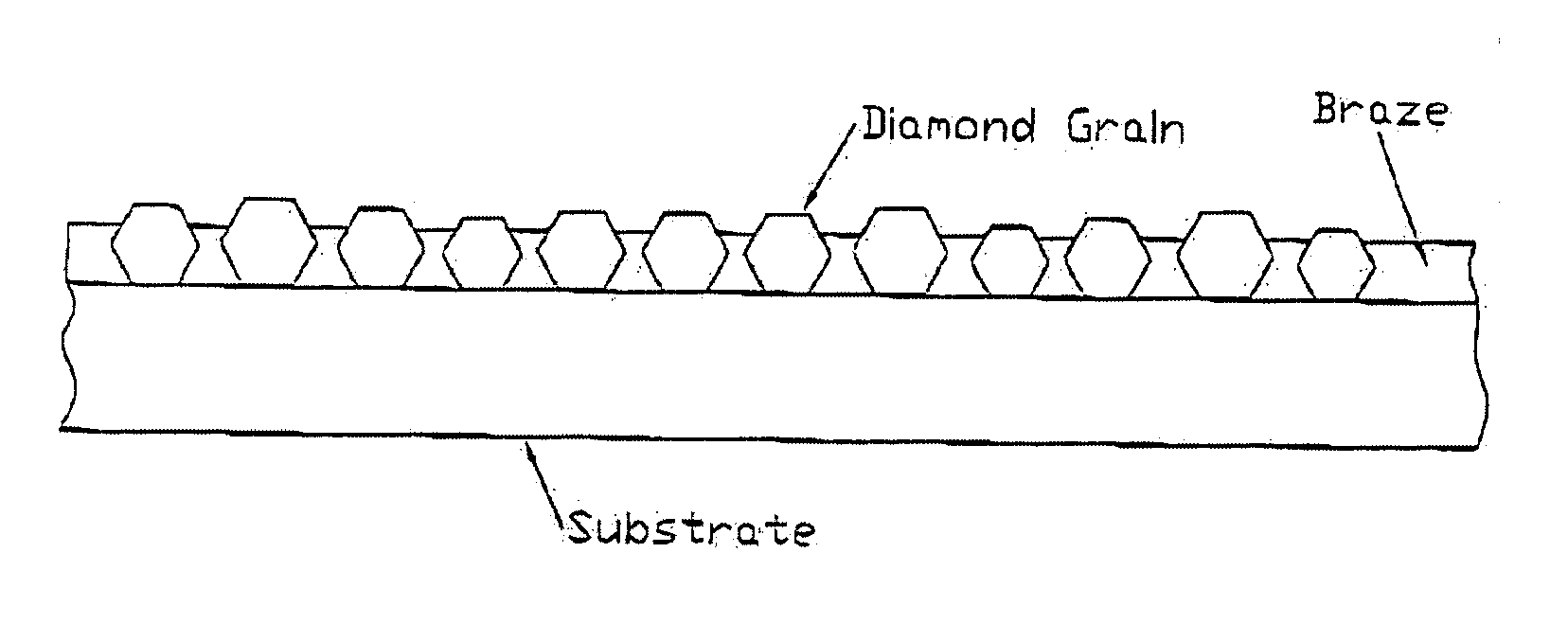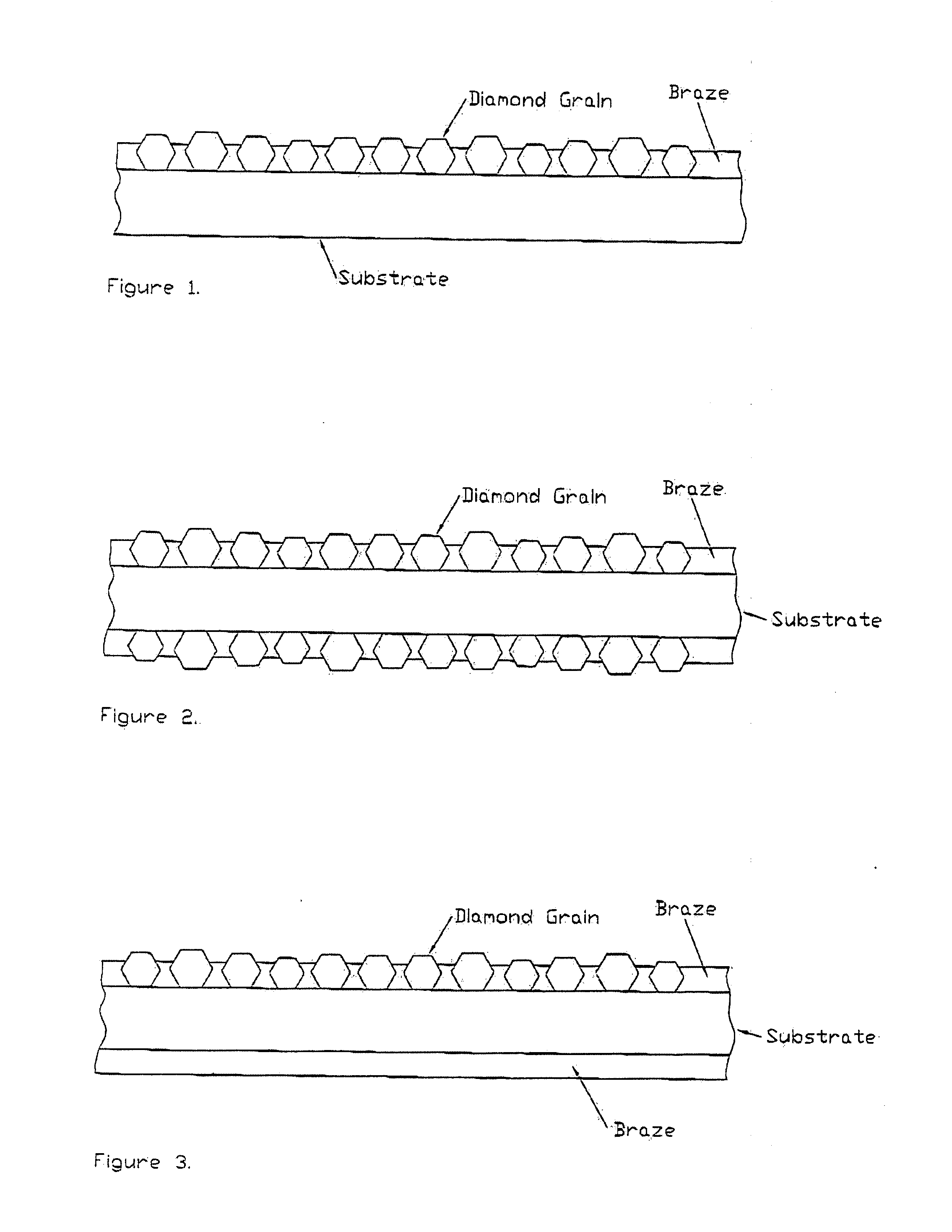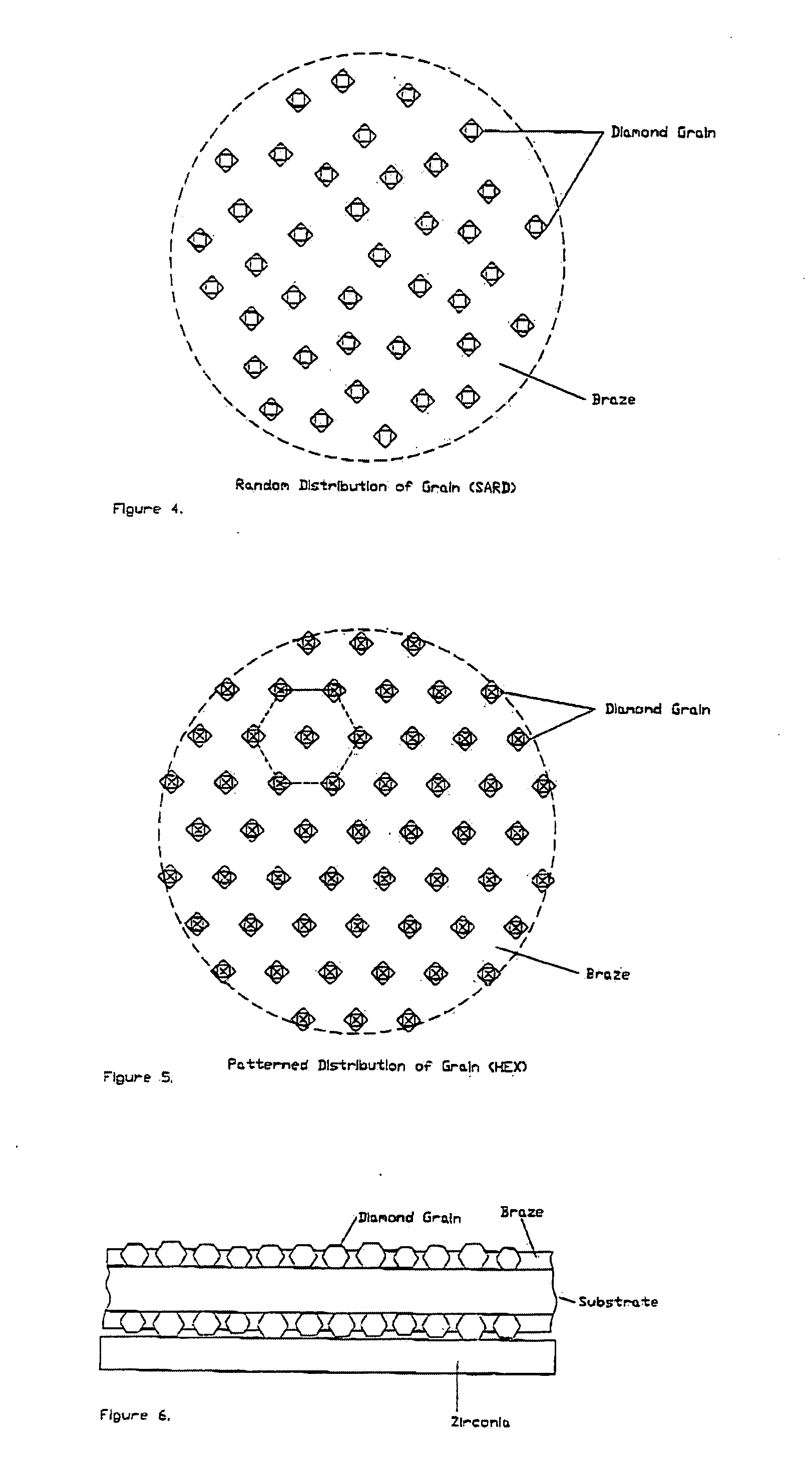Conditioning tools and techniques for chemical mechanical planarization
a technology of mechanical planarization and conditioning tools, applied in the field of abrasives technology, can solve problems such as cost increases, and achieve the effect of reducing the lift-up of brazing films
- Summary
- Abstract
- Description
- Claims
- Application Information
AI Technical Summary
Benefits of technology
Problems solved by technology
Method used
Image
Examples
example 1
[0040]FEPA D76 200 / 230 mesh diamonds (source: Element Six Ltd) were subsieved to −85 micrometers +65 micrometers. 3.6183 gram of diamonds were sieved using the sieves (U.S. Sieve Series) shown below. The following distribution of diamonds on or through sieves of the given mesh was obtained:
SieveGrams%On 11600On 850.10422.88On 751.269735.09On 652.135959.03Through 650.10853.00Through 49003.6183100.00
[0041]Accordingly, 35.09% by total weight of sieved diamonds went through the sieve of mesh 85 and 59.03 by total weight of sieved diamonds stayed on the sieve of mesh 65. All other diamonds were discarded. Accordingly, 37.97% by weight of the retained diamonds had a particle size of less than 85 micrometers and more than 75 micrometers, and 62.03% by weight of the retained diamonds had a particle size of less than 75 micrometers and more than 65 micrometers. These diamonds were used in the manufacture of CMP pad conditioning tools, in accordance with various embodiments of the present inv...
example 2
[0042]A CMP pad conditioning tool with diamonds as abrasive particles on one side was manufactured according to the following steps:
[0043]1) a 304 stainless steel preform of 4″ diameter and 0.250″ thickness was cleaned by ultrasonic degreasing, dry blasting, and solvent wiping to make it receptive to brazing;
[0044]2) 0.003″ thick Vitta 4777 Braze tape (Vitta Corporation, Bethel Conn.) was applied to the readied surface by hand and was leveled using an acrylic roller;
[0045]3) K4-2-4 adhesive (Vitta Corporation, Bethel Conn.) was applied, by brushing, onto the exposed surface of the braze tape to make it tacky (the part was then allowed to sit for a finite period (e.g., about 15 minutes) to allow for a suitable degree of tackiness);
[0046]4) a 0.002″ thick foil (source: TechEtch, Plymouth Mass.) with a hexagonal array of openings (0.004″ to 0.005″ diameter) was designed to allow precise placement of single grit abrasives, and the foil was mounted in a suitable rigid frame to provide a ...
example 3
[0053]BNi2 (American Welders Association designation) braze tape (Vitta Corporation, Bethel, Conn.) was applied to a four inch diameter CMP dresser preform (304 stainless steel) and a roller was used to remove any air bubbles. The tape thickness was 0.007±0.0001 inches. Vitta adhesive (Vitta Corporation, Bethel, Conn.) was applied to the tape surface to make it tacky and diamond (FEPA 100 / 120 mesh subsieved to −155 micrometers +139 micrometers) was placed on the tacky braze surface using a hexagonal stencil. The coated preform was oven dried at 75° C. overnight, and then fired under vacuum (<1 mm Hg) in a furnace at 1020° C. for 20 minutes. After furnacing, a CMP dresser with an out-of-flatness of less than about 0.002 inch was produced. It will be appreciated that the same example can be made using the diamond from Example 1.
PUM
 Login to View More
Login to View More Abstract
Description
Claims
Application Information
 Login to View More
Login to View More - R&D
- Intellectual Property
- Life Sciences
- Materials
- Tech Scout
- Unparalleled Data Quality
- Higher Quality Content
- 60% Fewer Hallucinations
Browse by: Latest US Patents, China's latest patents, Technical Efficacy Thesaurus, Application Domain, Technology Topic, Popular Technical Reports.
© 2025 PatSnap. All rights reserved.Legal|Privacy policy|Modern Slavery Act Transparency Statement|Sitemap|About US| Contact US: help@patsnap.com



